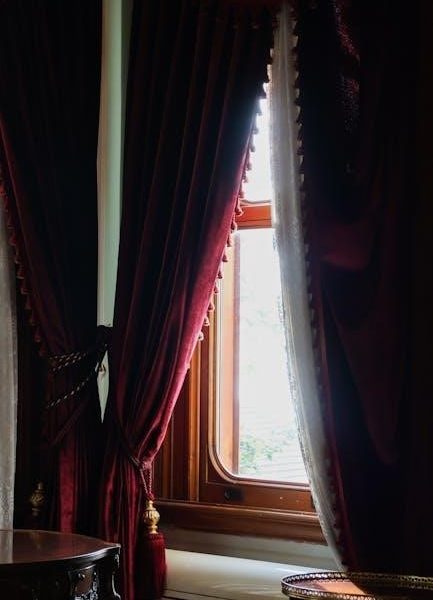Finding Free Dress PDF Patterns
Discover a world of free dress PDF patterns online! Numerous websites and blogs offer downloadable patterns for various skill levels, from beginner-friendly designs to more advanced projects․ Explore these resources to find your perfect dress pattern and start sewing today!
Where to Find Free Patterns
The internet is a treasure trove of free dress PDF patterns! Dedicated websites like Sew Mama Sew and Maison Fauve UK showcase a curated collection of free patterns, categorized by skill level and style․ Blogs and individual designers often share free patterns as well․ Look for websites specializing in sewing patterns; many offer free downloads alongside their paid options․ Unfettered Patterns, for example, provides free patterns alongside their paid offerings․ Don’t forget to check out online communities and forums dedicated to sewing; these often feature links to free resources and pattern sharing amongst members․ Pinterest can also be a valuable resource, with numerous boards dedicated to free sewing patterns․ Remember to always check the license and usage rights before downloading and using a pattern․
Types of Free Dress Patterns Available
The variety of free dress PDF patterns available online is astounding! You’ll find patterns for simple, beginner-friendly dresses, perfect for those new to sewing, often featuring straightforward designs and minimal seams․ For intermediate sewers, more intricate styles such as wrap dresses, maxi dresses with tie details, and A-line dresses with various sleeve options are readily available․ Advanced patterns might include complex constructions like fitted bodices, intricate necklines, or unique design features․ Patterns also vary by style⁚ casual sundresses, elegant evening gowns, practical work dresses, and even vintage-inspired designs can all be found․ Sizes typically range from children’s to adult’s, catering to diverse body types․ Some patterns focus on specific fabrics, like knit dresses or those using woven materials․ Don’t hesitate to explore the options and find the perfect match for your skills and style preferences․
Beginner-Friendly Free Patterns
Starting your sewing journey with a free PDF pattern can be incredibly rewarding! Many websites offer easy-to-follow patterns specifically designed for novices․ Look for patterns with clear, concise instructions and minimal pattern pieces․ Simple A-line dresses are a great starting point, often featuring minimal seams and straightforward construction․ Tunic-style dresses are another excellent choice, typically requiring basic sewing skills and readily available fabrics․ Consider patterns with forgiving silhouettes that don’t require precise fitting․ Look for patterns that include detailed diagrams and illustrations to guide you through each step․ Many beginner patterns emphasize straightforward techniques, such as basic seams, hemming, and simple closures․ Remember to choose a fabric that’s easy to work with, such as cotton or linen, for a smoother sewing experience․ Don’t be afraid to start small and build your confidence as you progress to more challenging projects․
Advanced Free Dress Patterns
For experienced sewists seeking a challenge, the world of advanced free PDF dress patterns offers exciting possibilities․ These patterns often incorporate complex design elements such as intricate draping, princess seams, or fitted bodices requiring precise measurements and adjustments․ You’ll encounter more advanced techniques like inserting zippers, creating tailored collars, or working with structured fabrics like brocade or silk․ Many patterns include multiple variations, allowing for customization and creativity․ The instructions might be more concise, assuming a greater understanding of sewing terminology and techniques․ Look for patterns featuring unique details, such as elaborate sleeves, asymmetrical designs, or mixed fabric combinations․ These advanced patterns provide an opportunity to showcase your skills and create truly unique garments․ Don’t hesitate to explore various design elements and experiment with different fabrics to elevate your sewing to the next level․ Remember, patience and attention to detail are key to success with intricate sewing projects․
Understanding PDF Sewing Patterns
PDF sewing patterns are digital files, offering convenience and accessibility․ They require printing, assembling, and cutting before sewing․ This method allows for customization and eliminates the need for physical pattern storage․ Learn how to effectively print and utilize these patterns for successful sewing projects․
What is a PDF Sewing Pattern?
A PDF sewing pattern is a digital, downloadable version of a traditional paper sewing pattern․ Instead of purchasing a physical paper pattern from a store, you download a PDF file containing all the pattern pieces and instructions․ This file can then be printed at home, using a large-format printer if necessary, or printed at a copy shop that offers large-format printing services․ Once printed, you’ll need to carefully assemble the pattern pieces, often by matching numbered markings and taping them together to create the full-size template for your garment․ This assembled pattern is then used to cut your fabric, following the indicated cutting lines and markings․ The advantage of PDF patterns is that they’re readily available online, often offered for free or at a lower cost than physical patterns, making them a popular choice for both beginners and experienced sewers alike․ They’re also easily stored digitally, saving space and allowing for convenient access whenever needed․ The availability of free PDF patterns has significantly expanded access to sewing projects for many individuals, democratizing the hobby and making it more accessible․ However, it is essential to ensure that your printer accurately scales the pattern to avoid sizing issues․ A test print is highly recommended․
Printing and Using PDF Sewing Patterns
Successfully printing and using PDF sewing patterns requires careful attention to detail․ Before printing, ensure your printer settings are accurate to avoid scaling issues․ Many patterns include a test square to verify correct scaling; print this first․ Choose high-quality paper; thicker paper is preferable to prevent tearing during cutting․ Some patterns are split across multiple pages; carefully match and tape these pages together using the provided guidelines․ Precisely aligning the pattern pieces is crucial for a well-fitting garment․ Use a sharp pair of scissors or a rotary cutter to cut the pattern pieces accurately, following the marked lines․ Remember to account for seam allowances; these are usually indicated on the pattern․ Once the pattern pieces are cut, carefully pin them to your fabric, ensuring proper placement․ Use weights or pins to keep the pattern pieces securely in place while you cut the fabric․ Always check the pattern instructions for any specific guidelines regarding fabric cutting․ After cutting, carefully remove the pattern pieces and follow the sewing instructions provided with your pattern․ Take your time and follow each step methodically for optimal results․ Remember to check the fit frequently during construction to ensure everything aligns correctly․ A well-printed and carefully used PDF pattern can lead to a successfully sewn garment․
Advantages and Disadvantages of PDF Patterns
PDF sewing patterns offer several advantages․ They are readily available online, eliminating the need for trips to fabric stores․ This convenience allows for immediate access to a wide variety of designs, often at a lower cost than traditional paper patterns․ PDF patterns are also easily stored digitally, saving space compared to bulky paper patterns․ Furthermore, many free PDF patterns are available, making them a cost-effective option for beginners and experienced sewists alike․ However, PDF patterns also have disadvantages․ Printing can be expensive depending on the pattern’s size and the number of pages required․ Accurate printing and assembling the pattern pieces necessitate careful attention to detail to avoid sizing errors․ You need access to a printer and sufficient paper to accommodate the pattern pieces․ The lack of physical handling can make it harder to visualize the garment’s construction compared to traditional paper patterns․ Additionally, some free patterns might lack the detailed instructions and professional finish of commercial patterns․ Before committing to a PDF pattern, assess your printing capabilities and consider the potential challenges involved in printing and assembling a large-scale pattern․ Weighing these advantages and disadvantages will help you decide if a PDF pattern is right for your next sewing project․
Resources for Free Dress Patterns
Numerous online platforms offer free dress PDF patterns․ Explore dedicated pattern websites, sewing blogs, and even open-source pattern generation software for a diverse selection of designs to suit your skill level and style․
Major Online Pattern Providers
While many sources offer free patterns, several major online retailers specialize in providing both free and paid sewing patterns․ These platforms often feature a curated selection of designs, ensuring quality and ease of use․ Independent designers and established brands alike contribute to these collections, offering a wide variety of styles and difficulty levels․ You can find everything from simple A-line dresses perfect for beginners to more complex designs incorporating intricate details and unique construction techniques․ Searching these sites for “free dress patterns” will often yield a smaller, but still diverse, selection of downloadable PDFs․ Remember to check the sizing charts carefully before downloading to ensure a proper fit․ Many sites also offer customer reviews and ratings, allowing you to gauge the quality and ease of construction of a pattern before committing to a project․ This can be particularly helpful when tackling more challenging designs․ Take advantage of this valuable resource to find the perfect free dress pattern for your next sewing project․
Blogs and Websites Offering Free Patterns
Beyond major pattern companies, a vast network of independent blogs and websites dedicated to sewing offer free dress PDF patterns․ These platforms often showcase unique designs created by individual sewists and designers, providing a treasure trove of creative inspiration․ Many blogs focus on specific styles or skill levels, making it easier to find patterns suited to your abilities and preferences․ For instance, you might discover blogs specializing in vintage-inspired dresses, minimalist designs, or patterns for plus-size individuals․ The quality and instructions can vary, so carefully review user comments and pattern previews before downloading․ Look for detailed instructions, clear diagrams, and multiple views of the finished garment․ Many independent designers use their blogs to share their passion for sewing and offer free patterns as a way to connect with the sewing community․ These patterns often reflect the unique styles and techniques of the creators, leading to a wonderfully diverse selection that goes beyond mass-produced designs․ Exploring these resources can introduce you to new techniques and provide inspiration for future projects․
Open-Source Pattern Generation Software
For those seeking ultimate customization and control over their dress patterns, open-source pattern generation software offers a unique approach․ These programs allow you to input your own measurements and design preferences to create completely bespoke patterns tailored precisely to your body shape and style․ FreeSewing is a prime example, lauded by both home sewers and fashion entrepreneurs for its ability to generate highly accurate and customizable patterns․ While requiring a degree of technical understanding, these tools empower you to design dresses that fit flawlessly, unlike many mass-produced patterns․ This eliminates the frustration of alterations and ensures a perfect fit from the start․ The open-source nature of these programs allows for continuous development and community contributions, leading to ongoing improvements and updates․ Furthermore, utilizing open-source software promotes a more sustainable approach to fashion, reducing reliance on commercially produced patterns and encouraging a more personal and environmentally conscious approach to clothing creation․ The learning curve might be steeper than using pre-made patterns, but the rewards of a perfectly fitted, uniquely designed dress are significant․

